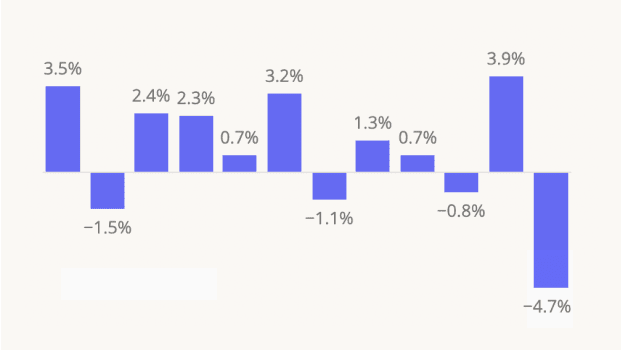Grab-and-go dining is thriving. Recent data indicates that nearly three out of four restaurant orders are taken to go. This trend is a particularly beneficial one for the limited-service dining category, which encompasses quick-service, fast-casual, and coffee chains.
We took a look at the visit data for these three subcategories of the limited-service dining world to understand how consumer behavior varies by dining type.
The State of Dining
In a period marked by economic concerns, diners seeking convenient and budget-friendly choices often turn to limited-service options. And in recent months, coffee emerged as the strongest segment within the limited-service category, followed by fast-casual restaurants. Visits to both segments were up every month except February, when YoY foot traffic dropped due to inclement weather and a leap year comparison. Meanwhile, QSR saw essentially flat YoY visitation trends since March 2025.
This visit performance highlights shifts in dining preferences across visitors to the three segments. Coffee’s status as an affordable indulgence may be one factor driving traffic to the category. And with consumers becoming more discerning about their disposable income, fast-casual restaurants appear to be benefiting from the quality and perceived value that many such chains offer.
Short Visits Driving Growth
Diving deeper into the data suggests that short visits (less than 10 minutes) drove much of the growth in the coffee and fast-casual segments during the first five months of 2025, with YoY trends for short visits consistently outperforming YoY trends for longer (10+ minutes) visits.
Caffeinated Dominance
The overall coffee segment continues to impress with elevated visits, though a closer look reveals significant variances within the category.
Specifically, mid-sized and small coffee chains are thriving. These chains – including brands like Dutch Bros and Black Rock Coffee Bar experienced YoY visit growth of 7.3% and 7.1%, respectively, largely due to chain expansions. In contrast, large coffee chains – a sub-category that includes major players like Starbucks and Dunkin’ – saw visits dip by 4.5% YoY.
And small coffee chains were the only segment to experience a slight YoY uptick in average visits per location – indicating that even as the segment expanded its footprint, existing locations, on average, continued to see modest visit growth. This trend may be partially attributed to the relative affluence of these chains’ visitors, who tended to come from trade areas with more high-income consumers (>$100K) than those frequenting mid-sized and large coffee chains.
Chicken’s Continuous Climb
Within the fast-casual and quick-service dining segment, burger chains reign supreme, but they face a formidable new challenger. Big Chicken – fast-casual and quick-service dining chains that focus on chicken in all its forms – have been ascendant over the past few years. Between 2019 and 2025, these restaurants significantly expanded their relative visit share from 15.0% to 18.3% among a wide range of fast-casual and quick-service dining categories, including burgers, Mexican chains, sandwich chains, and pizza chains. Much of this growth came at the expense of burger chains, which, despite retaining their title as the category’s largest segment, saw their relative visit share decline from 62.3% in 2019 to 59.8% in 2025.
Limited Service, Large Success
The limited service category, encompassing a huge range of dining options, continues to evolve and thrive, whether through the dominance of small coffee chains or chicken offerings.
What changes might the category undergo in the coming months and years?
Visit Placer.ai/anchor for the latest data-driven dining insights.




.svg)





.png)
.png)

.png)
.png)






.avif)


